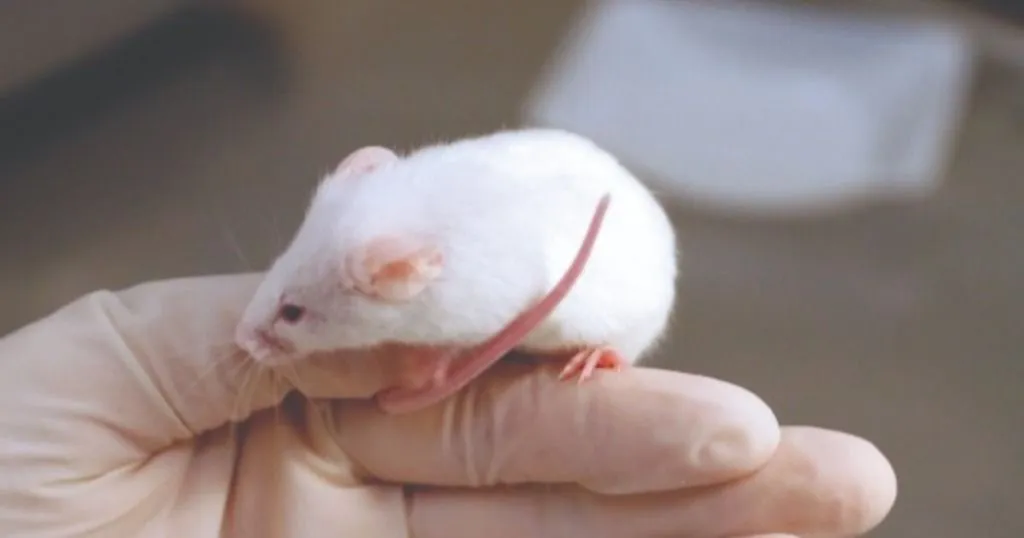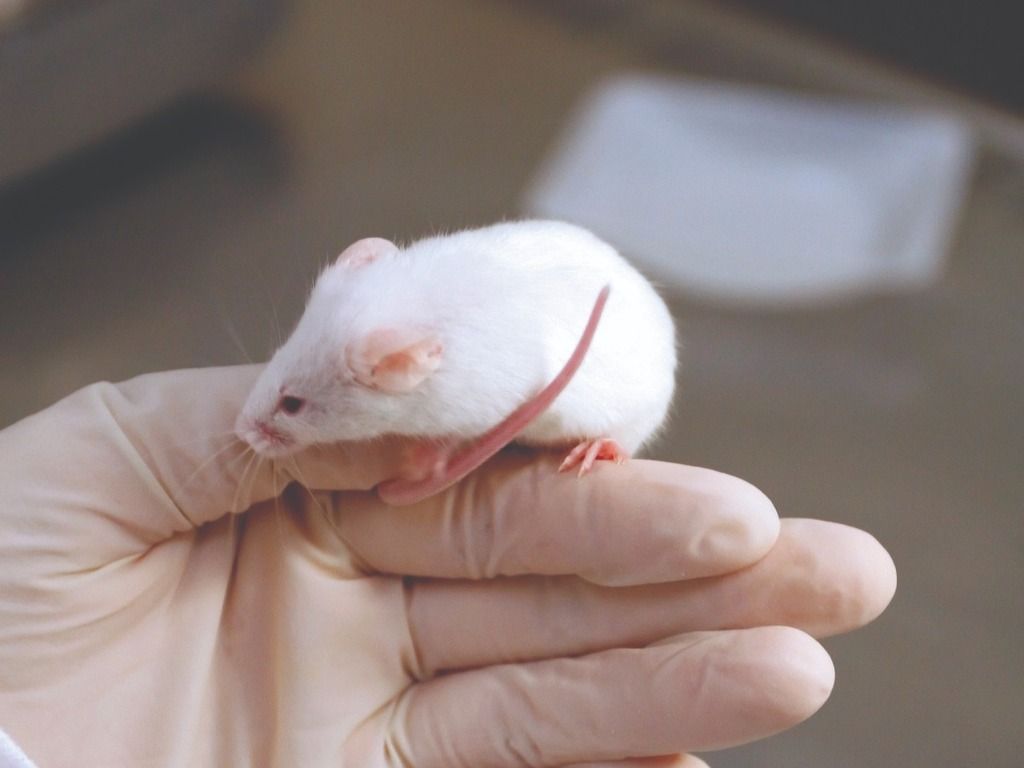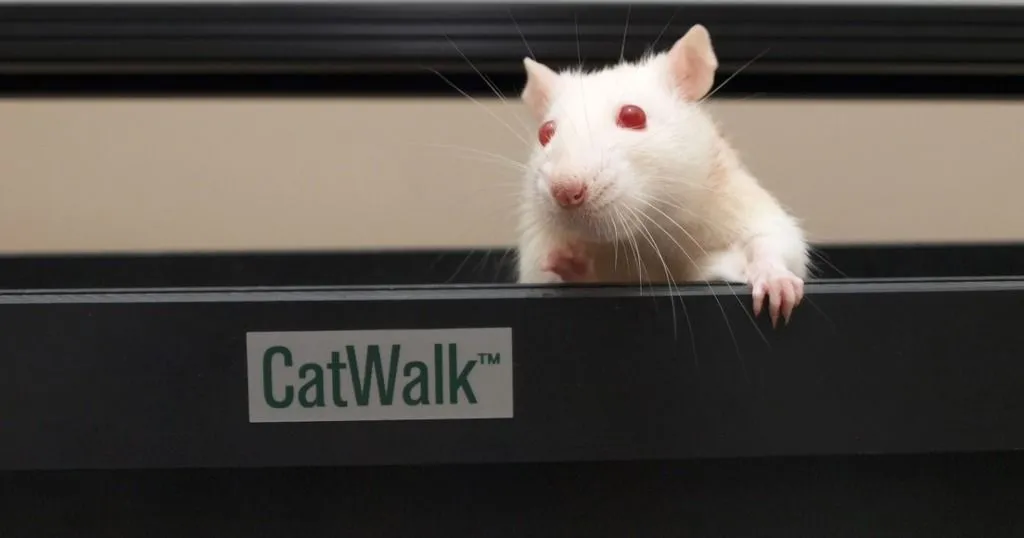CatWalk XT: Valid tool for objective gait analysis in TBI mice model

Many people suffer from TBI and consequently also long-term gait and motor function deficits. For this reason, functional outcome became the focus when developing new treatment strategies for TBI.
Posted by
Published on
Tue 25 Aug. 2020
Topics
| CatWalk XT | Gait | Gait Analysis | Mice | Traumatic Brain Injury |
Researchers all over the world are conducting studies to better understand the lasting effects of Traumatic Brain Injury (TBI), and develop treatments and therapies associated with the best outcomes in people who suffer from this type of injury. Up until now, medical treatments that showed a promising neuroprotective effect in animal models unfortunately did not translate to a successful therapy in clinical trials in humans. With this in mind, an important question arises: How could we improve this?
Translation of experimental results into the clinical practice
In order to enhance the outcomes of research on animal models, a pre-clinical drug-screening consortium for TBI was established: Operation Brain Trauma Therapy. The latter reevaluates potential neuroprotective drugs in animal models of TBI by investigating drug effect on different pathophysiologic aspects of traumatic brain injury.
However, there is another important aspect that would help to improve this translation further: precise and objective evaluation of functional outcome in experimental models.

Traditional clinical tests and their limitations
One of the most frequently used animal models of TBI is the Controlled Cortical Impact (CCI) model. Mice with CCI show relevant gait impairment and deficits in motor function, just as people with traumatic brain injury do. Even though this is one of the most commonly used animal models, objective and valid assessment of gait and motor function is difficult when using traditional clinical tests like the rotarod, beam walk, grid walk, the cylinder test, etc. All those tests have several limitations:
- They are subjective (observer dependent)
- They use force or reward in order to make animals move
- They can only detect gross deficits of motor function and gait
- They are performed in surroundings that are usually creating an insecure and stressful environment for the animals, which results in animals trying to hide their gait deficits
Lastly, most of the TBI injuries in mouse models are of moderate intensity. The tool used for assessing gait must thus be able to detect subtle changes of gait and locomotion.
Ways to improve gait analysis research
In order to tackle the limitations of traditional tests, Walter et al. (2020) decided to evaluate the gait analysis system CatWalk XT, which is developed for automated and objective assessment of gait and locomotion in rodents. In contrary to the traditional tests, rodents are allowed to move voluntarily, without force. While they freely traverse a glass plate, high-speed camera captures their footprints and body weight distribution.
In their study, Walter et al, (2020) used a CCI mouse model, and examined more than 100 different spatial and dynamic parameters that are automatically analyzed by mentioned device.
Establishing a gait and locomotion phenotype of CCI mice
Researchers gathered data on day one, three, and seven after the Controlled Cortical Impact in their mice models. Mice had to perform at least three compliant runs for CatWalk XT analysis, and in most cases, only three runs in total were sufficient to obtain them. There was no set time limit to complete each individual run, while maximum speed variation was set on 60%. It is worth mentioning that average Run Maximum and Body Speed Variations were similar or even lower than in other studies where they set a maximum speed variation under 30%.
Automation and elimination of human error improves gait analysis
After collecting the data and running the analysis, Walter et al. (2020) concluded the following:
- CatWalk XT is an objective tool, limiting observer intervention to a minimum
- Automatic data collection and analysis save a lot of time and does not result in reduction of data quality
- When using CatWalk XT, reproducibility of data improves due to automation and elimination of possible human errors
- CatWalk XT detects very subtle yet significant impairments which are otherwise impossible to detect by human observation

"The CatWalk XT® is very well applicable to animals subjected to CCI and generates well reproducible data."
Walter et al (2020) |In Behavioural Brain Research
Important steps in the development of new treatment for TBI
There is a growing population of people with traumatic brain injury and poor gait prognosis and functional outcome. Many of them suffer from gait and motor function deficits for decades after the injury and unfortunately, there is still no effective therapy to help them. For this reason, functional outlook became the focus when developing new treatment strategies for TBI.
In order to improve translation from medical treatments that showed a promising neuroprotective effect in animal models, to a successful therapy in clinical trials in humans, precise and objective evaluation of functional outcome in experimental models is crucial. Further research on laboratory animals using a valid, accurate, and observer independent tool, such as CatWalk XT, is thus necessary.
Literature
Walter, J., Kovalenko, O., Younsi, A., Grutza, M., Unterberg, A. and Zweckberger, K. (2020). The CatWalk XT® is a valid tool for objective assessment of motor function in the acute phase after controlled cortical impact in mice. Behavioral Brain Research, 392.
Related Posts

Extracellular vesicles from umbilical cords improve traumatic spinal cord injury

Gait research: let your animals walk freely

